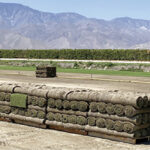In this article published by the American Society of Golf Course Architects in By Design magazine, June 2021 issue, Stacie Zinn Roberts & Dr. Yanqi Wu examine scientific claims backed up by data and research reports, with the real-world experiences of a golf course architect and two superintendents who have used Tahoma 31 on their golf courses.
Perhaps the best way to select a grass variety for your golf course project is to read the university research results and then witness for yourself, or talk to colleagues who have seen the turf ’s performance in a golf course setting. That’s what Jeff Lawrence, ASGCA, who is president of South Carolina-based Lawrence Golf Design, did when he found his go-to grass, Tahoma 31 Bermudagrass. A new vegetative, warm-season grass, available as sod or sprigs, Tahoma 31 is the latest bermudagrass variety developed by the highly successful turfgrass breeding program at Oklahoma State University. Previous releases include Latitude 36, NorthBridge, and Patriot bermudagrasses.
The research shows that Tahoma 31 is rated number one of bermudagrasses studied in National Turfgrass Evaluation Program (NTEP) trials, and other university tests, for early spring green-up, cold tolerance (winter survivability), lower water use and wear tolerance, and tied for the top spot in turf quality.
In South Carolina, Lawrence tested Tahoma 31 on a few tees and green surrounds at 3’s Greenville, specified all tees and 18 fairways at Greer Golf, and is in the process of changing over all the tees at Pickens
Golf Club, with a proposed nine- hole, par-three course to come, also using the grass.
“For the application that we’re using it for here in South Carolina in the transition zone, and seeing the benefits of the turf green-up sooner in the spring, with green color that lasts a little bit longer in the fall, and the density and the recovery time, that’s something that is very attractive when thinking of playability and visual presentation,” says Lawrence. “We’ve had success with Tahoma 31, and I look forward to expanding its usage to other courses.”
To further compare research data to actual performance in a golf course setting, we spoke with Lawrence and two golf course superintendents who have Tahoma 31 in use at their facilities. They highlighted a number of attributes.
Early spring green-up
“One of the advantages of Tahoma 31 is the shoulder season color,” says Lawrence. “In the spring, in the fall, you’re going to have better color, better contrast, which is great to have on that shoulder season. Obviously, during the peak season, the high season, it’s going to have pristine conditions.”
In NTEP tests from 2014-17, Tahoma 31 ranked at the top spot for early spring green-up among all vegetative bermudagrass cultivars tested in 16 states.
At the William Flynn-designed Naval Academy Golf Club in Annapolis, Maryland, all fairways and tees were renovated in May 2020 with Tahoma 31. Eric David, golf course superintendent, says because Tahoma 31 only goes dormant for about three months in the winter, versus the six months of dormancy the course previously experienced with common bermuda fairways, he no longer overseeds his fairways.
“We basically stopped mowing it in October…and it was green until the middle of December,” says David. “The members are extraordinarily happy with the decision” to plant Tahoma 31.
Winter survivability
The winter of 2013-14 swept a polar vortex into the Midwest that created record low temperatures. Dr Cale Bigelow, a professor of turf science and ecology at Purdue University, located in West Lafayette, Indiana, participated in the NTEP study that winter. In a December 2019 article in Golf Course Management magazine, Dr Bigelow was quoted as saying only nine of 42 bermudagrasses tested survived with at least 50 percent
ground cover by spring. Some 14 of the grasses completely died. By the end of the NTEP study, Tahoma 31 was rated by far with the greatest winter survivability in Indiana at only 4 percent winter kill. Mean scores in two states where winter survivability was measured, Indiana and Kentucky, confirmed Tahoma 31’s top status.
Tahoma 31’s cold hardiness allows the grass to be planted further north in the transition zone than previously seen with other bermudagrass varieties. The grass is in use as far north as Colorado and New Jersey, where winters can be brutal. The benefit in northern climates is to be able to change out cool-season grasses, such as bentgrass, with Tahoma 31, a warm-season grass that can survive through the winter and thrive in hot summers when bentgrass struggles.
In Ohio, Jared Burgess is the golf course superintendent at Chillicothe Country Club, a 1915 Donald Ross design. In April of last year, the club’s fairways and tee boxes were converted from bentgrass to Tahoma 31.
As for winterkill, Burgess says: “I don’t think that’s going to be an issue. We had the hardest winter here that we’ve had in four years…I think it’s almost impossible to kill it off.”
Low water use
A field trial conducted from 2013- 15 at Oklahoma State University published in the release documents for Tahoma 31 (designated in research trials as OKC1131), showed that, averaged over 24 recorded dates in three years, Tahoma 31 used 18 percent less water than TifTuf, a competitive variety of bermudagrass known for drought tolerance.
Before changing over to Tahoma 31, Burgess says: “Our city water bill was running up around $40,000 a year, and it was not even enough for the bentgrass not to burn out” in the middle of the summer. Now, his course’s need for irrigation is minimal. Burgess says: “Mother Nature takes care of most of it, as long as it gets some rainfall during the week.”
Wear tolerance and turf quality
In tests of bermudagrasses grown under traffic stress at the University of Tennessee in Knoxville, Tahoma 31 was rated the top performer for turfgrass quality.
At the Naval Academy Golf Club, David says Tahoma 31’s recovery from traffic is so good, along with tees and fairways, he uses it for cart paths leading in and out of his maintenance facility in areas that would otherwise be a muddy mess. The grass’s lateral recovery, even when it starts to slow down vertical growth in the fall, is where it truly shines, he says.
“On tees where we have people hitting from an area, we move the tee markers, and three days later, it’s recovered. It’s really, really traffic tolerant,” says David.
Tahoma 31 tied for the top spot in turf quality in the 2013-17 NTEP study on bermudagrass. “It’s so much better than the standard varieties that we’re typically used to,” Lawrence says.
For more information, download a
comprehensive summary of all research cited.




